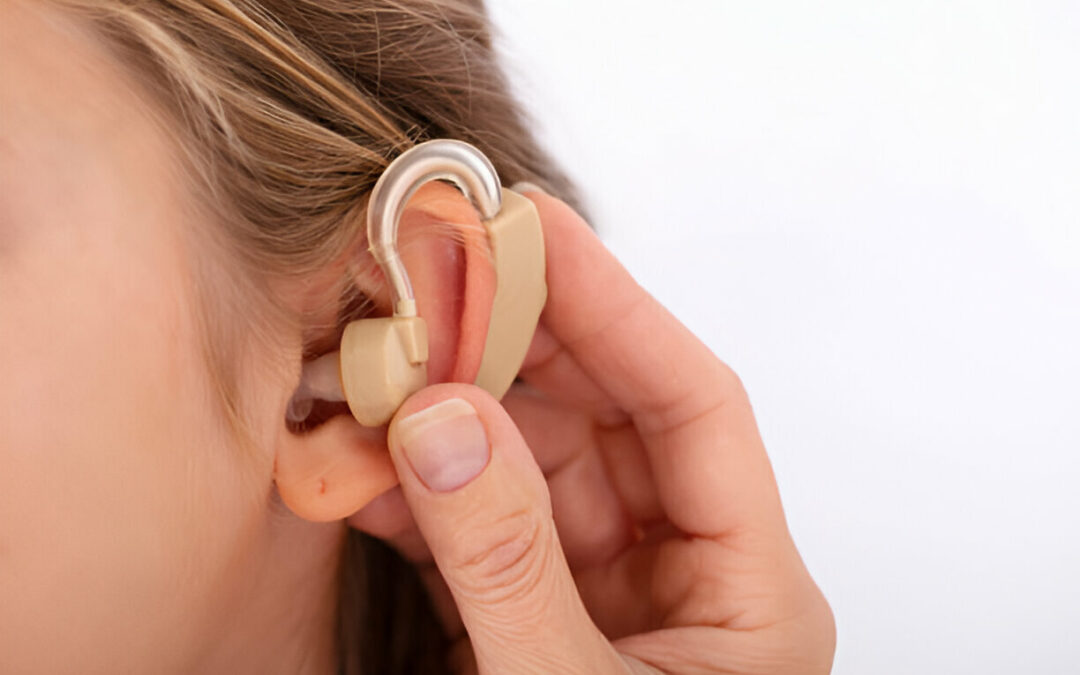For people with hearing loss, navigating public spaces can be a challenge. Background noise, poor acoustics, and distance from the sound source can all make it difficult to hear conversations, announcements, and presentations. Thankfully, technology exists to bridge this gap and empower individuals with hearing aids to enjoy clearer audio experiences – Hearing Aid Loops.
What are Hearing Aid Loops?
Hearing Aid Loops, also known as audio induction loops or telecoils loops, are assistive listening systems specifically designed to improve sound quality for individuals using hearing aids equipped with a telecoil (T-coil) function. Unlike traditional amplification systems that simply increase the overall volume, hearing aid loops offer a more targeted solution.
How Hearing Aid Loops Work
Here’s a breakdown of how Hearing Aid Loops function:
- Signal Source: The audio source, such as a microphone picking up a speaker’s voice or a music system, transmits the sound signal to a loop driver.
- Loop Driver: This amplifies the audio signal and sends it through a looped wire discreetly installed around the perimeter of the designated area.
- Electromagnetic Field: The loop wire creates a weak electromagnetic field within the looped area.
- Telecoil (T-Coil): When a hearing aid with a T-coil function is positioned within the electromagnetic field, the telecoil picks up the signal.
- Clear Audio Transmission: The hearing aid then converts the received signal into amplified sound, delivered directly to the user’s ear.
Benefits of Hearing Aid Loops
Hearing aid loops offer numerous advantages for individuals with hearing loss:
- Improved Sound Quality: By bypassing background noise and directly transmitting the signal to the hearing aid, loops provide a clearer and more intelligible listening experience.
- Reduced Listening Fatigue: Struggling to hear in noisy environments can be tiring. Hearing loops eliminate the need for excessive straining, reducing listening fatigue.
- Enhanced Communication: Clearer audio fosters better comprehension and promotes more effective communication in public settings.
- Increased Confidence: The ability to hear clearly in various environments boosts confidence and social participation.
- Discreet and Convenient: Hearing loops function seamlessly without the need for additional equipment or visible devices.
Where Can You Find Hearing Aid Loops?
Hearing loops are becoming increasingly common in public spaces across Australia. Here are some places where you might find them:
- Theatres and cinemas
- Meeting rooms and conference centres
- Places of worship
- Courtrooms and government buildings
- Public transport hubs (airports, train stations)
- Universities and schools
- Museums and art galleries
Identifying Venues with Hearing Aid Loops
Look for the international symbol of access, which often incorporates the looped sound symbol, displayed at the venue entrance or website. You can also inquire with the venue directly to confirm if they have a hearing loop system installed.
What if My Hearing Aid Doesn’t Have a T-Coil?
If your hearing aid doesn’t have a T-coil function, other assistive listening technologies might be available at the venue. These could include neck loops or portable receivers that work in conjunction with your hearing aid.
The Importance of Hearing Augmentation Systems
Hearing aid loops represent a significant advancement in accessibility for people with hearing loss. By prioritizing the installation of such hearing augmentation systems in public spaces, Australian communities can foster inclusivity and ensure everyone has the opportunity to fully participate in various activities and events.
Making the Most of Hearing Aid Loops
Here are some tips for maximizing your experience with hearing aid loops:
- Activate Your T-Coil: Ensure your hearing aid’s T-coil function is activated before entering the looped area.
- Adjust Hearing Aid Settings: Some hearing aids require adjustments to optimize the signal received through the loop. Consult your hearing healthcare professional for guidance.
- Position Yourself Within the Loop: The strength of the signal can vary depending on your location within the looped area. Experiment to find the spot with the best reception.
Contact Us for Hearing Aid Solutions
If you’re experiencing hearing loss and considering hearing aids, contact us. We can provide expert advice on hearing aid options, including those equipped with T-coil functionality, to help you rediscover the joy of clear and vibrant sound.
Hearing aid loops play a crucial role in promoting accessibility and inclusivity for people with hearing loss. By understanding this technology and advocating for its use in public spaces, we can create a more connected and enriching environment for everyone.


Recent Comments